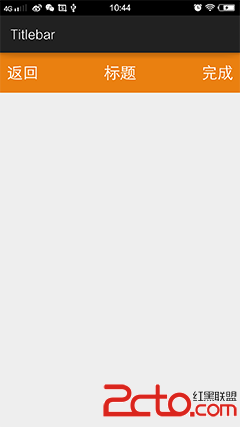編輯:關於android開發
整天用AsyncTask,但它的內部原理一直沒有特意去研究,今天趁著有時間,碼下它的原理。
具體用法就不再說明,相信大家已經用得很熟練了,我們今天就從它怎麼運行開始說。先新建好我們的AsyncTask:
1 class MyAsyncTask extends AsyncTask<String,Integer,Boolean>{
2
3 @Override
4 protected Boolean doInBackground(String... voids) {
5 return true;
6 }
7 }
好了,一個最基本的代碼已經好了,接下來我們怎麼運行它呢?當然,大家都知道的。
new MyAsyncTask().execute("參數");
那平時做到這裡,我們可能已經不去往不管了,因為已經執行起來了,但是,你有沒有想過
等等一連串的問題,接下來,我們就一步一步的去看一下,它內部到底做了哪些。
首先,我們看到它new了一個AsyncTask對象,那我們就去它構建函數看看。
1 public AsyncTask() {
2 mWorker = new WorkerRunnable<Params, Result>() {
3 public Result call() throws Exception {
4 mTaskInvoked.set(true);
5
6 Process.setThreadPriority(Process.THREAD_PRIORITY_BACKGROUND);
7 //noinspection unchecked
8 Result result = doInBackground(mParams);
9 Binder.flushPendingCommands();
10 return postResult(result);
11 }
12 };
13
14 mFuture = new FutureTask<Result>(mWorker) {
15 @Override
16 protected void done() {
17 try {
18 postResultIfNotInvoked(get());
19 } catch (InterruptedException e) {
20 android.util.Log.w(LOG_TAG, e);
21 } catch (ExecutionException e) {
22 throw new RuntimeException("An error occurred while executing doInBackground()",
23 e.getCause());
24 } catch (CancellationException e) {
25 postResultIfNotInvoked(null);
26 }
27 }
28 };
29 }
看著很多,其它就是new了兩個對象mWorker和mFuture,其實它們分別是Callable和Future的實現,關於它們兩個的實現原理,我會在另外一篇文章裡講解。需要注意的是,在實例化mFuture時,把mWorker當作參數傳入。現在還沒有用到它們,我們接下來往下看execute():
1 @MainThread
2 public final AsyncTask<Params, Progress, Result> execute(Params... params) {
3 return executeOnExecutor(sDefaultExecutor, params);
4 }
5
6 @MainThread
7 public final AsyncTask<Params, Progress, Result> executeOnExecutor(Executor exec,
8 Params... params) {
9 if (mStatus != Status.PENDING) {
10 switch (mStatus) {
11 case RUNNING:
12 throw new IllegalStateException("Cannot execute task:"
13 + " the task is already running.");
14 case FINISHED:
15 throw new IllegalStateException("Cannot execute task:"
16 + " the task has already been executed "
17 + "(a task can be executed only once)");
18 }
19 }
20
21 mStatus = Status.RUNNING;
22
23 onPreExecute();
24
25 mWorker.mParams = params;
26 exec.execute(mFuture);
27
28 return this;
29 }
我們看到了onPreExecute(),這也解釋了它確實比doInBackground運行的早,可以做一些准備工作。接下來,用到了我們前面提到的兩個對象,這裡是把我們傳遞過去的參數賦給了mWorker的變量,然後看26行 調用了Executor的execute(),並且把mFuture做為參數傳遞過去了,那我們看上一個方法,是把sDefaultExecutor當作參數傳遞過來的,那就看下它的定義:
1 public static final Executor SERIAL_EXECUTOR = new SerialExecutor(); 2 private static volatile Executor sDefaultExecutor = SERIAL_EXECUTOR;
它的最後實現類是SerialExecutor。我們接著看這個類定義了什麼。
1 private static class SerialExecutor implements Executor {
2 final ArrayDeque<Runnable> mTasks = new ArrayDeque<Runnable>();
3 Runnable mActive;
4
5 public synchronized void execute(final Runnable r) {
6 mTasks.offer(new Runnable() {
7 public void run() {
8 try {
9 r.run();
10 } finally {
11 scheduleNext();
12 }
13 }
14 });
15 if (mActive == null) {
16 scheduleNext();
17 }
18 }
19
20 protected synchronized void scheduleNext() {
21 if ((mActive = mTasks.poll()) != null) {
22 THREAD_POOL_EXECUTOR.execute(mActive);
23 }
24 }
25 }
這裡面,SerialExecutor的方法execute()方法傳入的參數Runnable,其實就是我們前面的mFuture(FutureTask實現了Future和Runnable),execute()方法內,會把我們傳入的mFuture存入mTasks,這時mActive還等於null,所以會執行scheduleNext(),這樣就會從隊列中取出第一個,放入線程池中,開始執行,當前也就是我們剛剛放入的mFuture,也就是執行了mFuture的run方法,至於run方法內部怎麼運行的,參見我的另一篇文章:Runnable和Future的原理 。總之呢,它就運行了mWorker的call(),為了方便理解,就把mWorker的call()代碼從上面copy到這裡
1 public Result call() throws Exception {
2 mTaskInvoked.set(true);
3
4 Process.setThreadPriority(Process.THREAD_PRIORITY_BACKGROUND);
5 //noinspection unchecked
6 Result result = doInBackground(mParams);
7 Binder.flushPendingCommands();
8 return postResult(result);
9 }
我們看到,4行修改了線程的優先級,第6行就有我們熟悉的doInBackground(),結果賦給了result,現在是在另外一個線程裡面,所以,在doInBackground方法裡面是不能操作UI的。最後返回的時候是調用了postResult(),並把結果當參數傳入。
1 private Result postResult(Result result) {
2 @SuppressWarnings("unchecked")
3 Message message = getHandler().obtainMessage(MESSAGE_POST_RESULT,
4 new AsyncTaskResult<Result>(this, result));
5 message.sendToTarget();
6 return result;
7 }
這裡面就是我們熟悉的Handler了,查找Handler最後的實現。
1 private static class InternalHandler extends Handler {
2 public InternalHandler() {
3 super(Looper.getMainLooper());
4 }
5
6 @SuppressWarnings({"unchecked", "RawUseOfParameterizedType"})
7 @Override
8 public void handleMessage(Message msg) {
9 AsyncTaskResult<?> result = (AsyncTaskResult<?>) msg.obj;
10 switch (msg.what) {
11 case MESSAGE_POST_RESULT:
12 // There is only one result
13 result.mTask.finish(result.mData[0]);
14 break;
15 case MESSAGE_POST_PROGRESS:
16 result.mTask.onProgressUpdate(result.mData);
17 break;
18 }
19 }
20 }
根據我們發送消息的CODE 為 MESSAGE_POST_RESULT,我們發現執行的是第13行,仔細看代碼會發現,result.mTask其它就是我們的MyAsyncTask對象,調用它的finish方法
1 private void finish(Result result) {
2 if (isCancelled()) {
3 onCancelled(result);
4 } else {
5 onPostExecute(result);
6 }
7 mStatus = Status.FINISHED;
8 }
這就一目了然了,最後會調用我們的onPostExecute方法,並把結果傳過去。基本的調用流程就是這樣的。
如果你仔細看了,你可能會發現,mFuture實例化的時候,重寫的done()方法並沒有介紹到,那它在整個流程中處於什麼樣的作用呢,我們接下來,單獨說一下。
protected void done() {
try {
postResultIfNotInvoked(get());
} catch (InterruptedException e) {
android.util.Log.w(LOG_TAG, e);
} catch (ExecutionException e) {
throw new RuntimeException("An error occurred while executing doInBackground()",
e.getCause());
} catch (CancellationException e) {
postResultIfNotInvoked(null);
}
}
根據名字應該可以猜到,這個方法是在整個異步任務執行完後調用的,在Future中,通過get()就可以獲取到我們前面說的mWorker中call方法的返回值(具體原理可看我另一篇文章),那我們再看postResultIfNotInvoked方法,到底對返回的結果做了哪些處理。
1 private void postResultIfNotInvoked(Result result) {
2 final boolean wasTaskInvoked = mTaskInvoked.get();
3 if (!wasTaskInvoked) {
4 postResult(result);
5 }
6 }
我們看到了postResult(),這個方法,我們在上面剛剛講過,它是在mWorker的call方法中,返回的時候調用的,你可能會問了,這個方法怎麼調用了兩次,不慌,我們看上面這個方法的名字,就了了解原因了post result if not invoked ,很明顯,這處的調用是防止call()裡面沒有調用而設置的,開關就是第2行的mTaskInvoked,它是一個AtomicBoolean,具體它干嘛的,自行google,我們發現在call方法裡面,有這樣一段代碼
mTaskInvoked.set(true);
所以,在postResultIfNotInvoked方法裡面時,如果執行了call方法,這裡就會返回true,下面就無法執行,這樣就保證了postResult方法只執行了一次。
 Android多分辨率適配實踐【1】使用字體圖標(內含兩枚神器),android兩枚
Android多分辨率適配實踐【1】使用字體圖標(內含兩枚神器),android兩枚
Android多分辨率適配實踐【1】使用字體圖標(內含兩枚神器),android兩枚目錄 Android多分辨率適配實踐【0】基礎適配篇(撰寫中)Android多分辨率適
 Android 高仿華為手機Tab頁滑動導航效果
Android 高仿華為手機Tab頁滑動導航效果
Android 高仿華為手機Tab頁滑動導航效果 首先帶大家看一下實現效果,用了兩種實現方式: 1.基於LinearLayout實現,導航欄不可響應手指滑動 2.基於Ho
 Xamarin Android 應用程序內圖標上數字提示,xamarinandroid
Xamarin Android 應用程序內圖標上數字提示,xamarinandroid
Xamarin Android 應用程序內圖標上數字提示,xamarinandroid最近在用 Xamarin 做一個 Android 應用,打開應用時,如果有新消息,需
 android組合控件Titlebar的定制過程
android組合控件Titlebar的定制過程
android組合控件Titlebar的定制過程 前言:我相信”天生我才必有用”這句話,每個人都有他的作用,也許他的作用相對其他人來不是很明顯